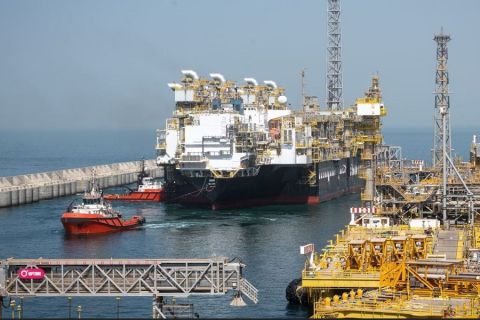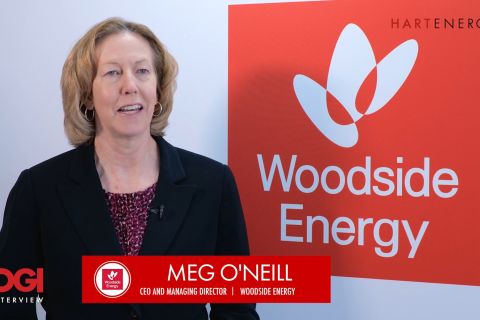LAUNCESTON, Australia—It is probably just ironic coincidence, but the same day the International Energy Agency (IEA) called on the world to end fossil fuel investments, the Australian government announced plans for a new, $460 million natural gas-fired power plant.
The stark contrast between the two announcements is, however, emblematic of the challenges the world faces in transitioning from fossil fuel energy to cleaner renewables as efforts to combat climate change become more urgent and widespread across the globe.
The IEA’s report on the pathway to net-zero carbon emissions by 2050, released on May 18, warned that investment in oil, natural gas and coal projects must come to an end if the target has any chance of being reached.
There’s no doubt that this is a major call, and a substantive shift from prior IEA positions, but the main question is whether the IEA’s goal is even remotely achievable.
Certainly there is evidence and hope that the massive switch in energy sources needed for net zero emissions could be possible in parts of the developed world, most likely Europe and North America.
But the key to the success of the IEA’s goal to net-zero is Asia, and here the agency’s proposed pathway faces its biggest challenges, and most likely failures.
It is easy to pick on Australia as an example of the challenge Asia is going to face in weaning itself off fossil fuels, and the cheap path to economic growth they have provided so far.
Australia’s conservative government has, in some ways, become the poster boy for recalcitrance on climate change actions, with its oft-stated support of fossil fuels and policy designed to encourage their development and use.
Federal Energy Minister Angus Taylor said on May 18 that his government would use its wholly-owned Snowy Hydro company to build a $464 million, 660-megawatt gas-fired power plant at Kurri Kurri, a regional area north of the country’s biggest city of Sydney.
The justification is that private power companies haven’t acted to replace retiring coal-fired units and the gas generator is needed to keep electricity supplies stable.
This position has been challenged by Australia’s private electricity companies, government regulators and politicians across the spectrum, including some within Taylor’s ruling Liberal Party.
Even if the necessity of back-up generation is accepted, which it isn’t by all parties, renewable solutions such as wind, solar and battery storage probably provide better value for money, the same, if not more, reliability and zero-carbon emissions once operating.
What appears to be at play in Australia is an energy market being driven by political objectives, rather than one where best policy and practice are implemented.
The current federal government of Prime Minister Scott Morrison has made no secret of its support for fossil fuels, natural gas in particular, while several state governments, including those controlled by Morrison’s party, favor renewables, as do most of the country’s private generators and electricity retailers.
Lack of Regional Support
In some ways Australia is the canary in the coal mine when it comes to broader energy policy in the region.
China, the world’s biggest coal miner, importer and consumer, shows little sign of weaning itself off the polluting fuel, continuing a massive build-out of coal-fired power, with 88.1 gigawatts currently under construction, equal to about half of the global total.
Japan, India and other countries across Asia are still building coal-fired generators, albeit at ever-slowing rates, but these assets will still likely run for decades to come given most are designed to operate for at least 40 years.
The message to stop natural gas developments is also likely to fall on largely deaf ears in Asia, given the region is currently planning to construct more infrastructure to produce, transport and use LNG.
LNG is viewed by countries such as Japan, China and South Korea as critical to their future energy needs, and even if these countries do actually try to achieve their net-zero emissions goals, LNG is likely to remain part of their energy mix for decades to come.
The IEA’s pathway foresees a massive switch to renewable electricity for future energy use as the way to end reliance on fossil fuels.
However, in Asia this looks currently unrealistic, especially given the opposition of many of the governments in the region, even those who have committed to net-zero targets.
Recommended Reading
TotalEnergies Acquires Eagle Ford Interest, Ups Texas NatGas Production
2024-04-08 - TotalEnergies’ 20% interest in the Eagle Ford’s Dorado Field will increase its natural gas production in Texas by 50 MMcf/d in 2024.
Tech Trends: Halliburton’s Carbon Capturing Cement Solution
2024-02-20 - Halliburton’s new CorrosaLock cement solution provides chemical resistance to CO2 and minimizes the impact of cyclic loading on the cement barrier.
E&P Highlights: Feb. 26, 2024
2024-02-26 - Here’s a roundup of the latest E&P headlines, including interest in some projects changing hands and new contract awards.
BP: Gimi FLNG Vessel Arrival Marks GTA Project Milestone
2024-02-15 - The BP-operated Greater Tortue Ahmeyim project on the Mauritania and Senegal maritime border is expected to produce 2.3 million tonnes per annum during it’s initial phase.
The OGInterview: How do Woodside's Growth Projects Fit into its Portfolio?
2024-04-01 - Woodside Energy CEO Meg O'Neill discusses the company's current growth projects across the globe and the impact they will have on the company's future with Hart Energy's Pietro Pitts.





